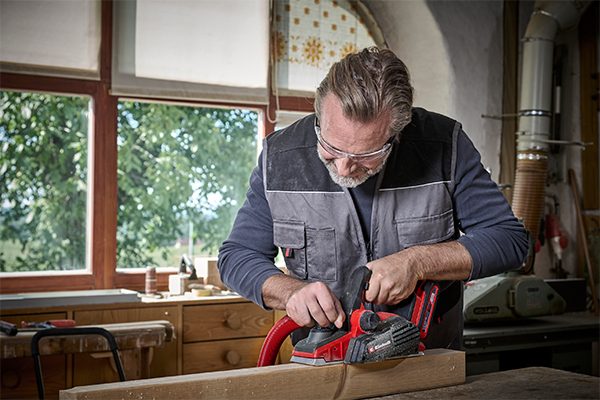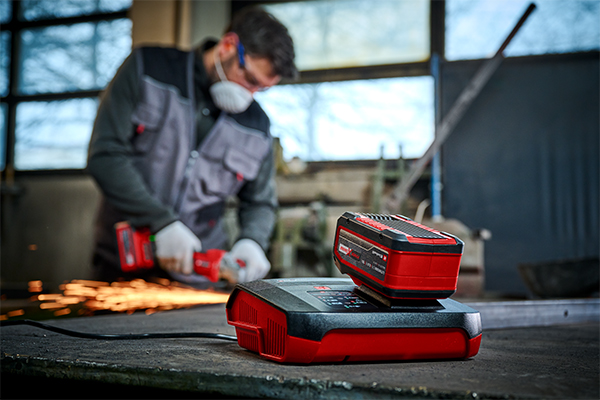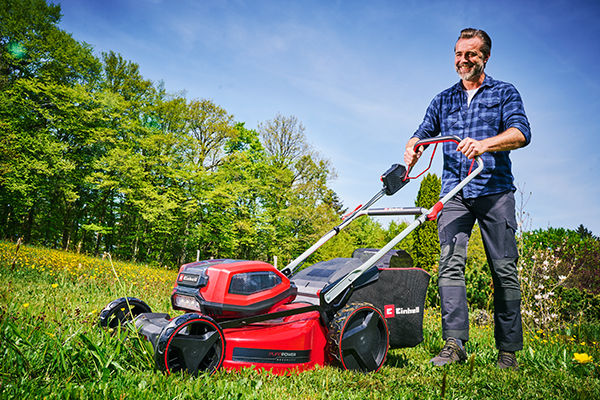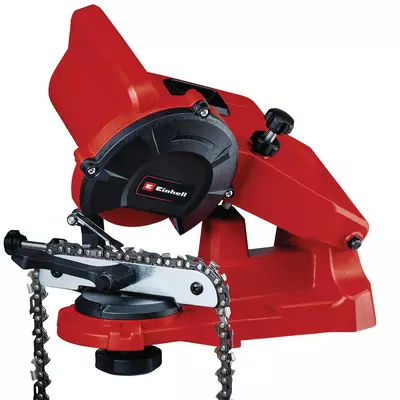Firewood Guide – Tips for cutting, storing and heating
There is nothing better than the comforting warmth of a fire. Whether on cold winter evenings snuggled in front of a Swedish stove or on warm summer nights with friends around a crackling campfire. Firewood often creates the most beautiful evenings. There are two ways to get it. Either you buy it or you cut it yourself.
No matter which method you choose, we will provide you with the most important information!
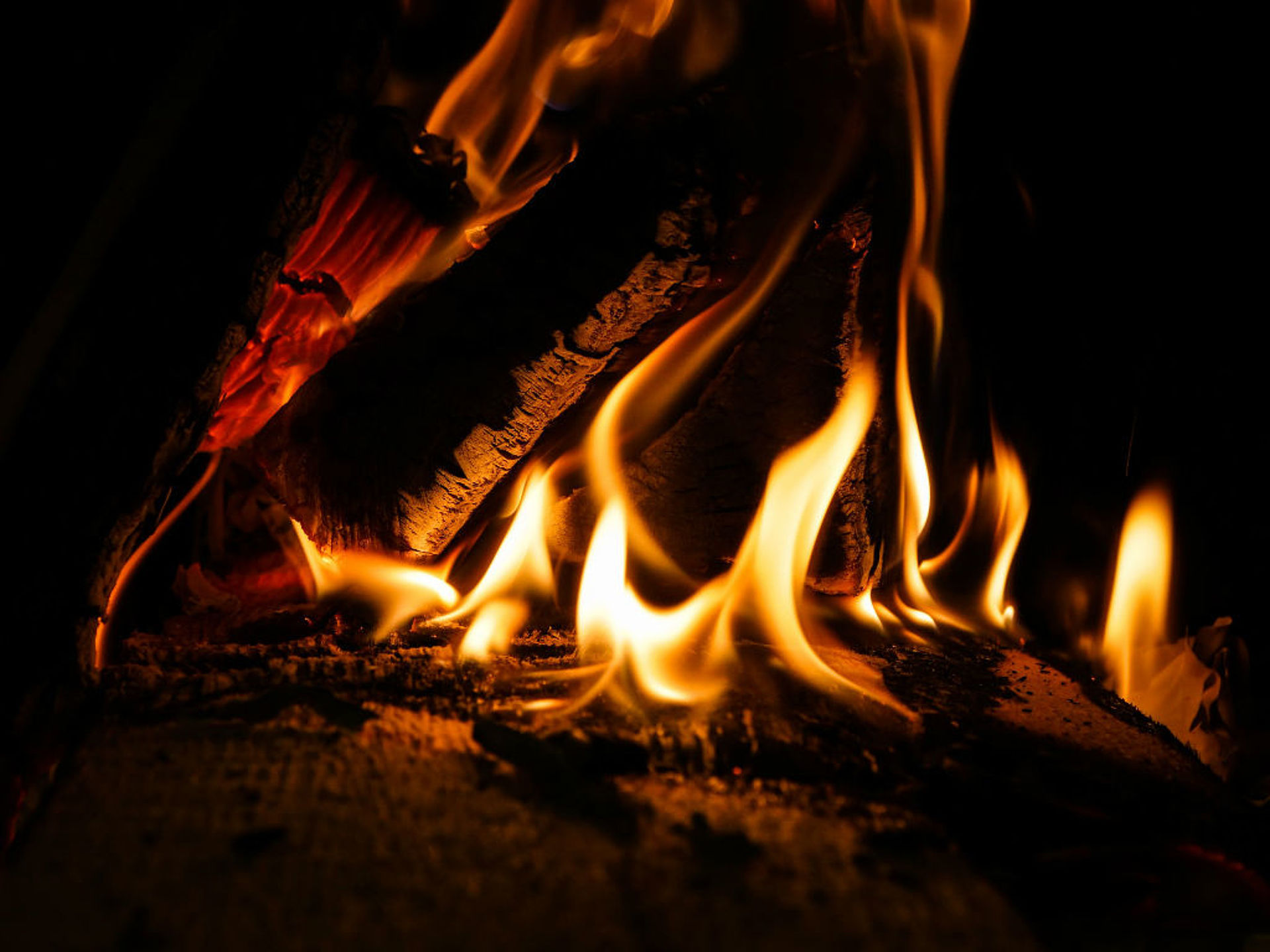
Chainsaws in action
In general, before using the chain saw it should be checked if all components of the saw, were screwed tightly and the chain brake worked correctly. In addition, you should pay attention that the chain is stretched. If the chain no longer cut properly, it should be sharpened gently before the use with the help of a saw chain grinder.
Types of chainsaws
Cordless chainsaws
A cordless chain saw with sufficient battery power is handy, powerful and also safer for your hearing. Especially when you are wood working in the garden, this quiet chainsaw will be a sensible alternative to the petrol chainsaw. In addition, it doesn't produce exhaust gases. Furthermore, you need less physical strength for longer working hours, because of its little weight.
When choosing the battery, we would recommend 2x 5,2 Ah batteries, to be able to cut firewood without any problems and over a longer period of time. Our chainsaw GP‐LC 36/35, for example, has a speed of 15 m / s and is assigned to class 1. Thus, it can cut even larger logs without any problems.
Petrol chainsaws
A petrol chain saw, on the other hand, impresses with its performance. Both, the engine power and the rotation speed of the petrol chain saw are clearly superior to those of the cordless and electric chainsaw. In addition, its range is unlimited because you are not dependent on a socket. However, in contrast to the cordless chain saw, the noise level under strain can quickly reach a value of over 100 db (A).
Electric chainsaws
An electric chainsaw is easy to use, unlike other chainsaw types. All you have to do is fill in the chain lubrication oil and plug the cable into the socket. It causes no pollution through exhaust gases, and it is the cheapest alternative, compared to petrol chainsaws. However, the electric chainsaw is not recommended for use in difficult terrain, as you always need a power source in the immediate surrounding area.
The safety clothes
Of course, for the proper use of the chain saw, an adequate protective clothing is necessary. Therefore, we can recommend a cut protection trouser. It protects the front leg area from injuries. It does not matter hereby if you work with a cordless, petrol or electric chainsaw. While wood working in the forest, wearing a safety helmet is also recommended. It protects against falling branches, offers, with the right choice of the helmet, sufficient hearing protection and additionally will gain good visibility, if you decide for a bright helmet colour. Furthermore, a cut protection jacket and work gloves can be worn.
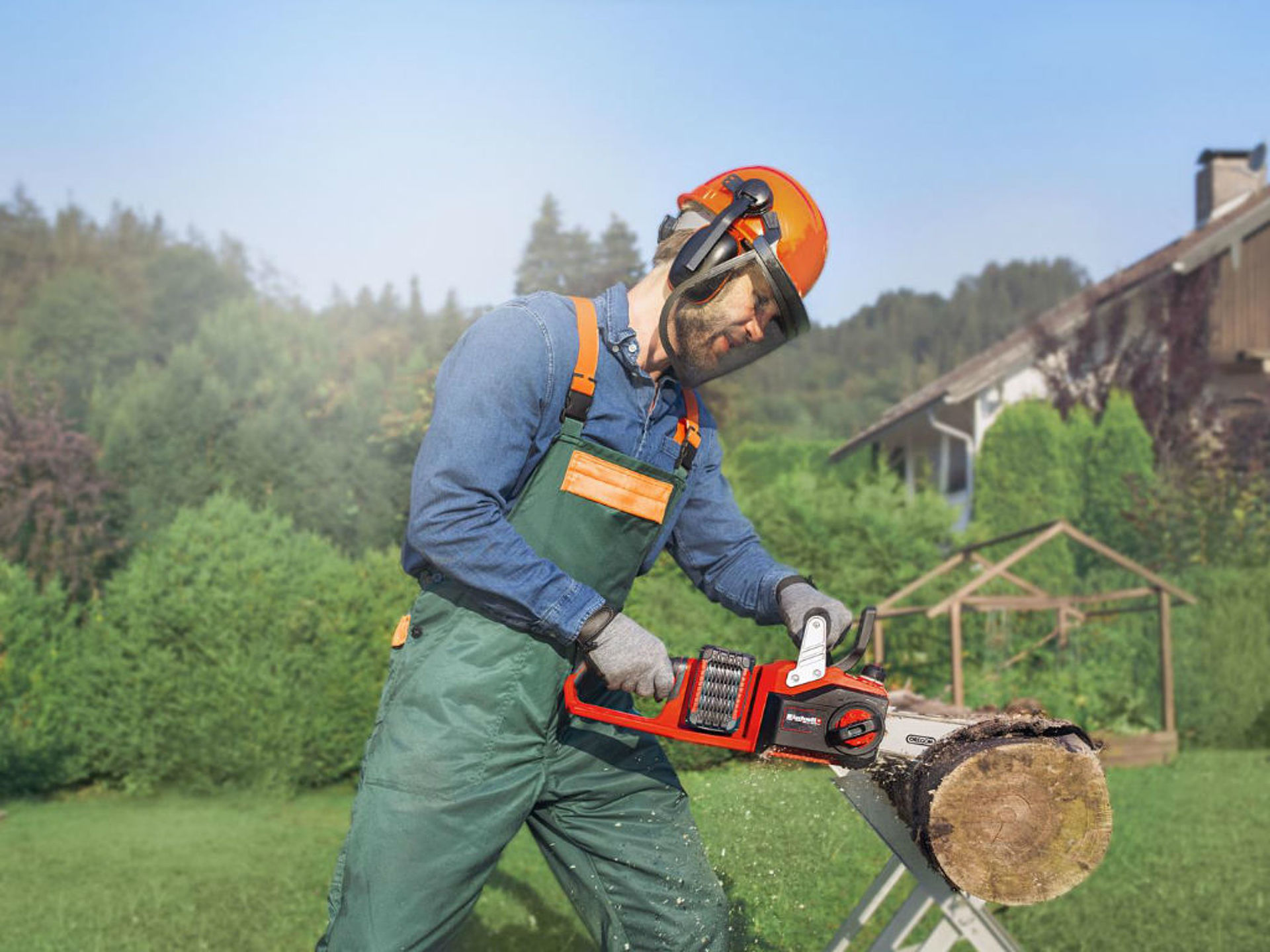
Legal foundations
Not only the safety clothing plays an important role in cutting wood. The legal requirements shouldn't be forgotten. For example, according to § 39 (5) of the Federal Nature Conservation Act, it is stipulated that trees that are outside the forest or on horticulturally used land, as well as hedges, shrubs and other woody plants, may not be felled between March 1st and September 30th. This applies to the bird protection because at this time birds nest in the trees. Only with permission, trees may be felled during this period. Gentle form and care cuts to eliminate the growth of the plants or to maintain the health of the trees, however, are permitted.
- If you wanted to cut down trees, this should be best done between November and February because during this time the wood contains only a little water and thus requires shorter drying times. You'll be on the safe side, if you look up the local legal requirements. Furthermore, individual regulatory points may vary from municipality to municipality.
Cutting firewood by yourself in the forest
In the future, of course, you can venture the way into the forest yourself. For this, you only need a sensible chainsaw, the appropriate occupational safety and not to forget the so‐called “chainsaw driver’s licence”. This certificate can be obtained either at the community college or the forester in a two‐day course. However, before you go into the forest, talk to the local forest ranger or take part in a so‐called firewood auction. When these events take place, you will usually find them on your community's website.
Which wood is suitable for what?
At first, you should know, that not all woods are treated equally. At the latest, when you search for prices for the firewood, you will get different prices depending on the type of wood. The rule of thumb here is that the higher the calorific value of the material, the higher the price per cubic meter.
Interestingly, one does not differentiate between coniferous and deciduous wood but between soft‐ and hardwood when choosing the right kind of firewood. Woods with a dry matter density of more than 550 kg / m³ are classified as hardwoods. Under this value, it is referred to as softwoods. The advantage of hardwood is its long burning time, which requires less wood, but produces more ashes than softwoods. However, softwoods develop a higher combustion temperature due to the lower wood density. Basically, every tree species has its advantages and disadvantages:
Beech and oak
Beech and oak are probably one of the most classical types of firewood. Due to their comparatively high calorific value, these woods burn with a beautiful flame pattern and a pleasant smell. Beech wood is also suitable for all kinds of stoves. Therefore, these types of wood are very popular but expensive as well. Among other things, this is due to the long drying time these woods need.
Spruce
Spruce wood burns off quickly compared to other types of wood. Due to its high content of resins, this wood reaches a high temperature rapidly. However, spruce wood is unsuitable for the use in open fireplaces, the resin bubbles in the wood burst quickly and the embers splash around. The resin pollutes both the fireplace panel and the chimney. Therefore, spruce wood is mainly used for heating storage ovens or wood gasification boilers.
Birch
The birchwood is probably the most attractive firewood. Due to its white bark, birchwood looks more beautiful than all the other types of wood. Due to the essential oils contained in the birchwood, the wood burns bluish with a pleasant smell.
Cutting firewood
After a successful tree fall, it is now time to take the further steps in processing of the wood.
Step-by-step instructions
- First, the tree is now delimbed with the chainsaw. The chainsaw should always be placed sideways to your body while cutting. If you slip off, you'll avoid falling into the chainsaw.
- The main stem is now sawed for transport in about 1m pieces. Likewise, the larger branches are sawed.
- Later put the logs on a log splitter and split them twice. Here, the stem is rotated 90 degrees after the first column, before it is split again. This results in the end four equal, 1m long wood pieces. Alternatively, you can also use a wedge to split the wood or place the trunk on a chain saw trestle. Then, as with the wood splitter, the wood piece is sawed twice in length with the chainsaw.
- The trunks now have the size of the branches and can be stored for drying. After a suitable drying time, the wood is cut with the chain saw into finished firewood logs.
Shredding branches
The branches can be processed to wood chips with the help of a shredder and later serve as mulch. Alternatively, these can also be crushed with an ax, then dried and can later act as a kindling aid.
Buying firewood
Sources of supply
You can obtain firewood from different sources, but if you used the chimney the first year, you should use wood that has already been aged for at least two years with a residual moisture content of 14%. Of course, if you like it comfortably, you can buy it in the hardware store at comparatively high prices. Better quality and above all, better prices you'll get however from local dealers. They advertise frequently in the well‐known advertisement portals on the Internet, and supply you also short‐term. Usually, they are private individuals who source the wood from the forest as a sideline and prepare it accordingly.
Measurement units for firewood
Those who catch up on firewood prices for the first time will stumble over cryptically sounding measurement units at first glance. These might be confusing at first time, but quite fast to understand.
Loose cubic metre (lcm)
A loose cubic metre is the amount of wood that can be thrown into a container measuring 1×1×1 meters. Here the logs aren't stacked, and thus it is compared to the cubic metre more cavities in the delivery.
Cubic metre (cm)
A cubic meter of wood is exactly the amount of ready‐cut firewood, which can be stacked exactly one meter high on an area of 1 × 1 meter. Through the stacking is relatively little cavity between the logs.
Solid cubic meter (scm)
A solid cubic meter is a theoretical cube made of solid wood with an edge length of exactly one meter. To determine a cubic meter, the log is measured, and the volume is calculated. Accordingly, there are no cavities existing to the solid cubic metre.
The storage
Freshly cut wood usually has a moisture content of about 50 to 65%. It should therefore be stored until a value of less than 20% is reached. When burning it earlier, hazardous pollutants may be released and soot may form in the furnace or chimney. Coniferous woods have a drying time of about 12 months. While deciduous woods have an optimal storage time of about 3 years. In addition, make sure that the wood is not stored too long, otherwise the calorific value drops annually by 5% from the 5th year of storage.
Furthermore, firewood should be stored in rooms with circulating air to prevent rot. Therefore, garage and cellars are rather less suitable as storage location. In addition, the wood shouldn't have direct contact with the ground, as the woods could otherwise absorb the ground wetness. A tarpaulin or at best a roof should protect the wood from bad weather.
- Thus, a firewood rack could be a possible solution because it meets all the requirements just mentioned. A cheaper alternative would be: Stone blocks and a frame made from longer logs, that build a foundation. Then the medium‐sized branches and the split logs are erected. On the sides, approx. 5 wood logs should be placed side by side. After each layer, the woods are arranged exactly opposite. This results in stable columns on both sides and the round branches can easily fill the void in the middle. Finally, the construction is covered with a corrugated iron or tarpaulin. The weather protection should still be fixed with stones or something similar.
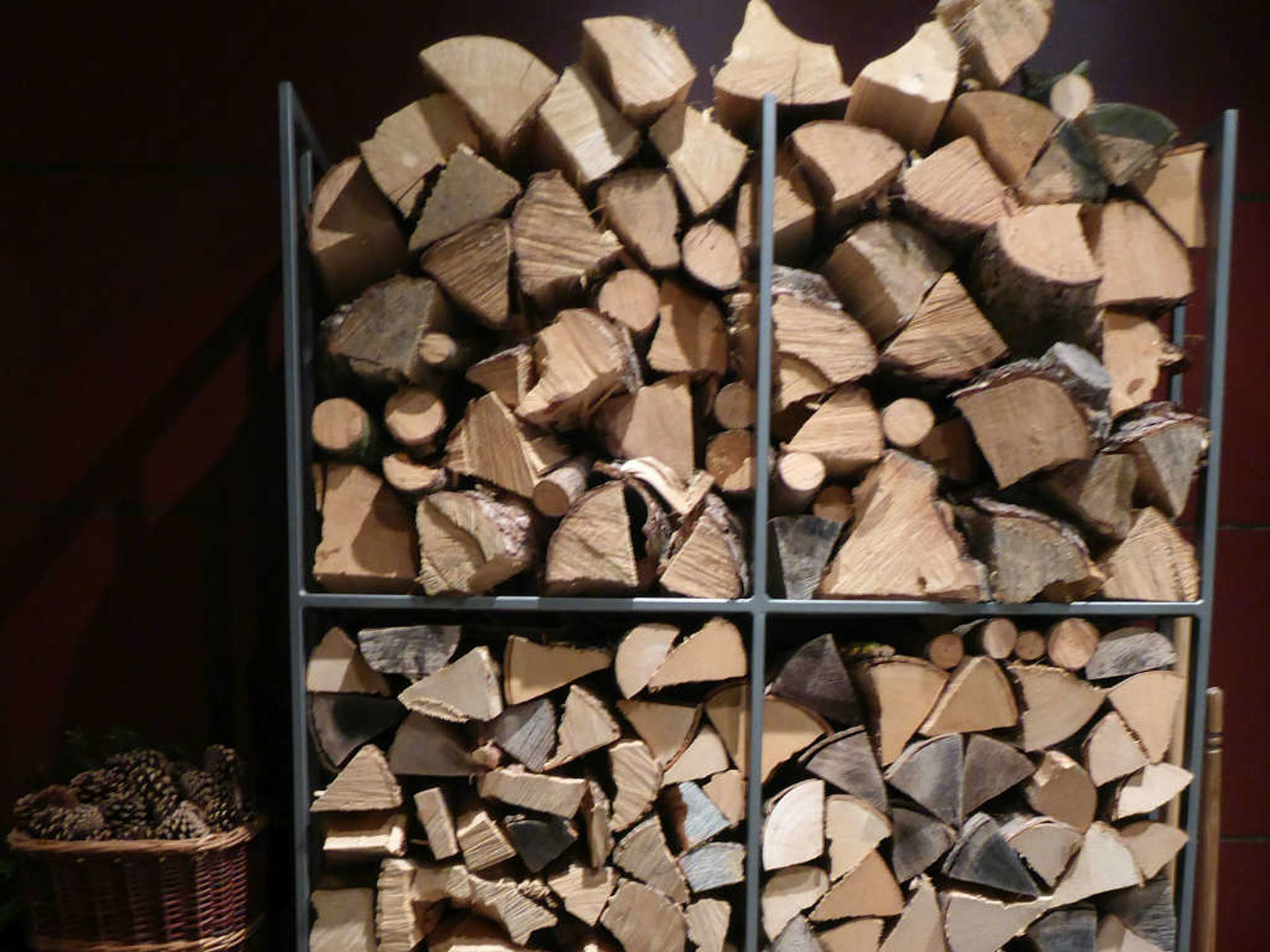
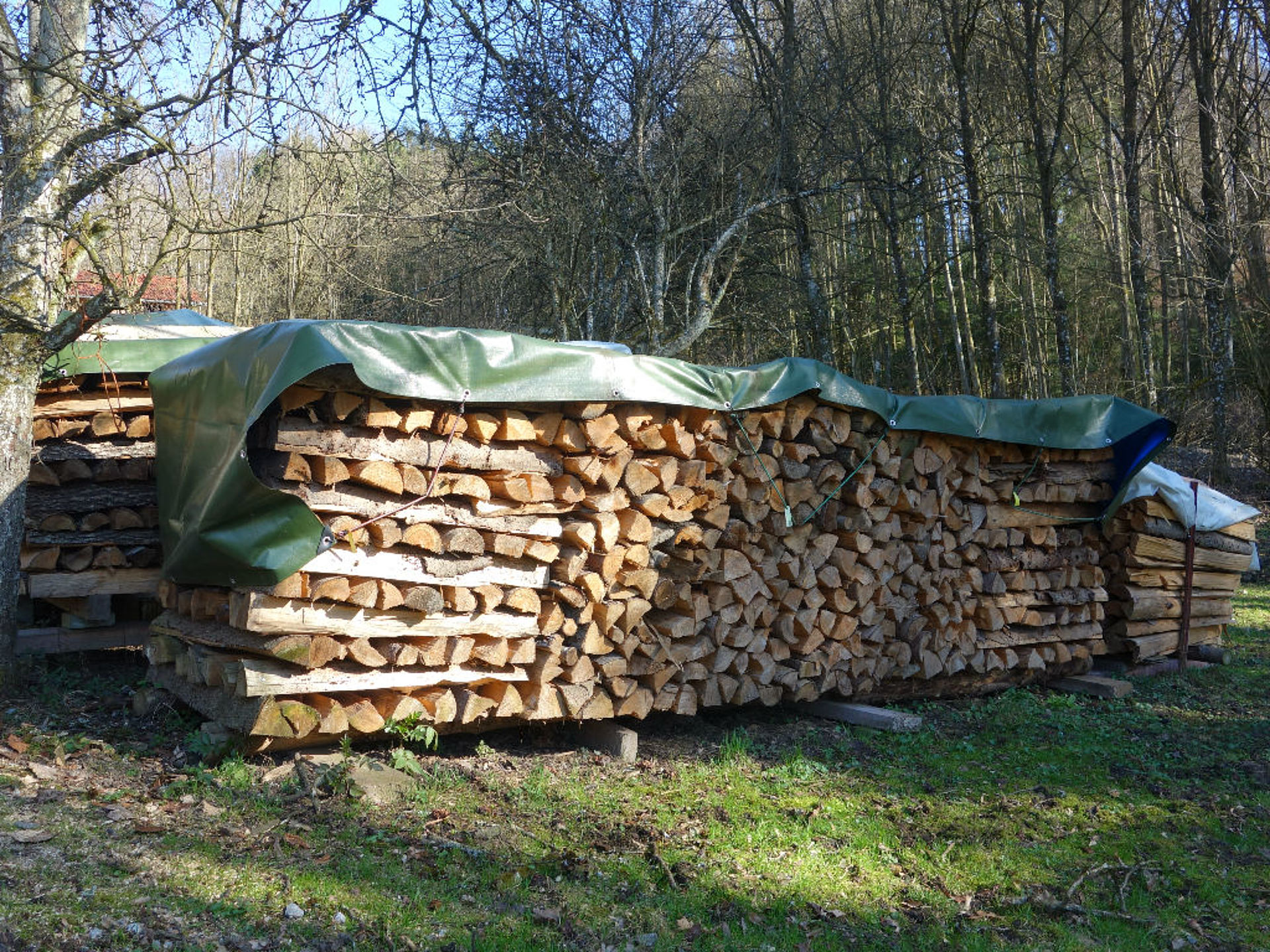
Heating up - How is the stove properly heated?
The heating up of a stove also needs to be learned. It depends on the right order.
But before you can start filling up the chimney with firewood, the ashes should be removed. When that is done, the stove can be filled in the classic way.
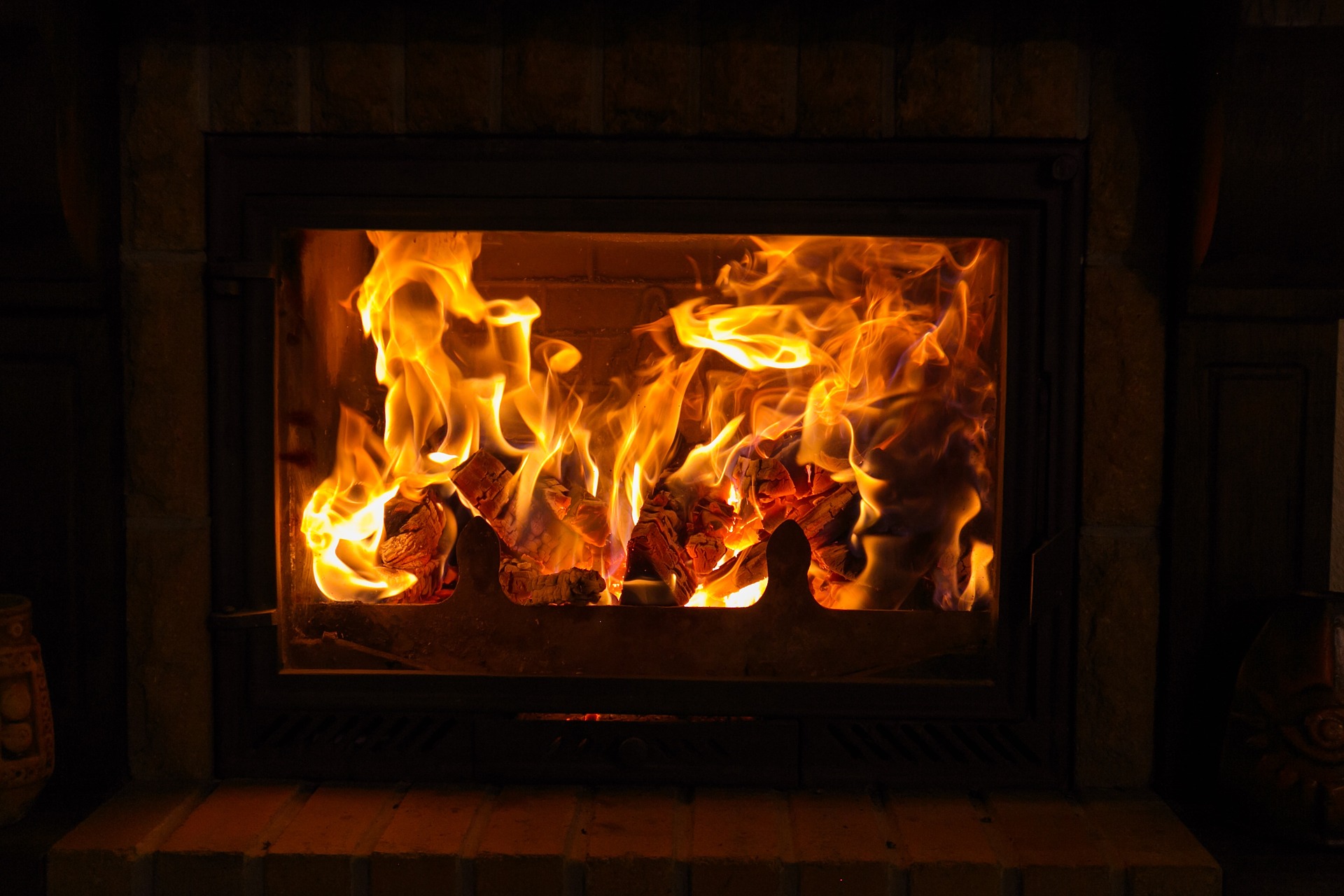
Tiled stove
- The first step by filling up a tiled stove is to put the lighter into the oven. Firing aids, but also small pieces of wood and branches are suitable.
- Then a few larger logs are put into the oven. There shouldn’t be erected too many large logs, as the fireplace should heat up slowly and donate constant heat. If too much wood is in the oven, it will heat up too quickly, which is bad for the life of the tiled stove.
- When the filling process is finished, the kindling can be lit in the bottom of the stove.
Modern stoves
In modern stoves, however, it is recommended to light up the fireplace from above. By this method, the fireplace gets filled exactly the opposite way. Below, the big wood logs are stacked and then, e. g. wood wool and the kindling wood are erected. This variant is also recommended by the chimney sweep, as the stove can heat up slowly with this method and thus no unnecessary wear of the glass pane and the combustion chamber is created.

